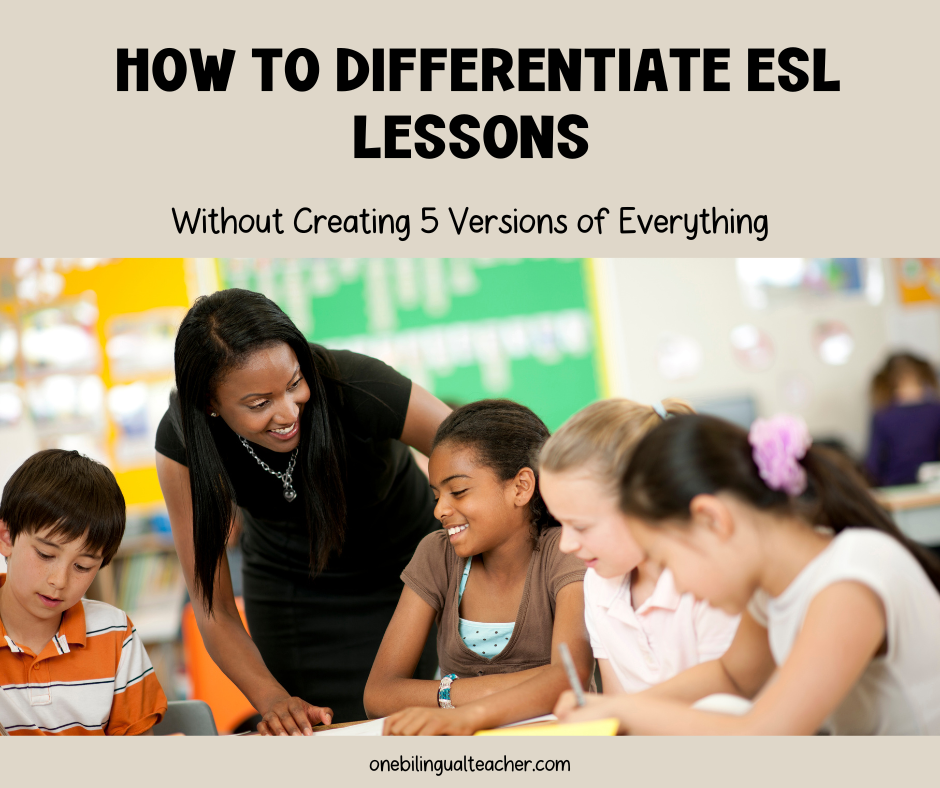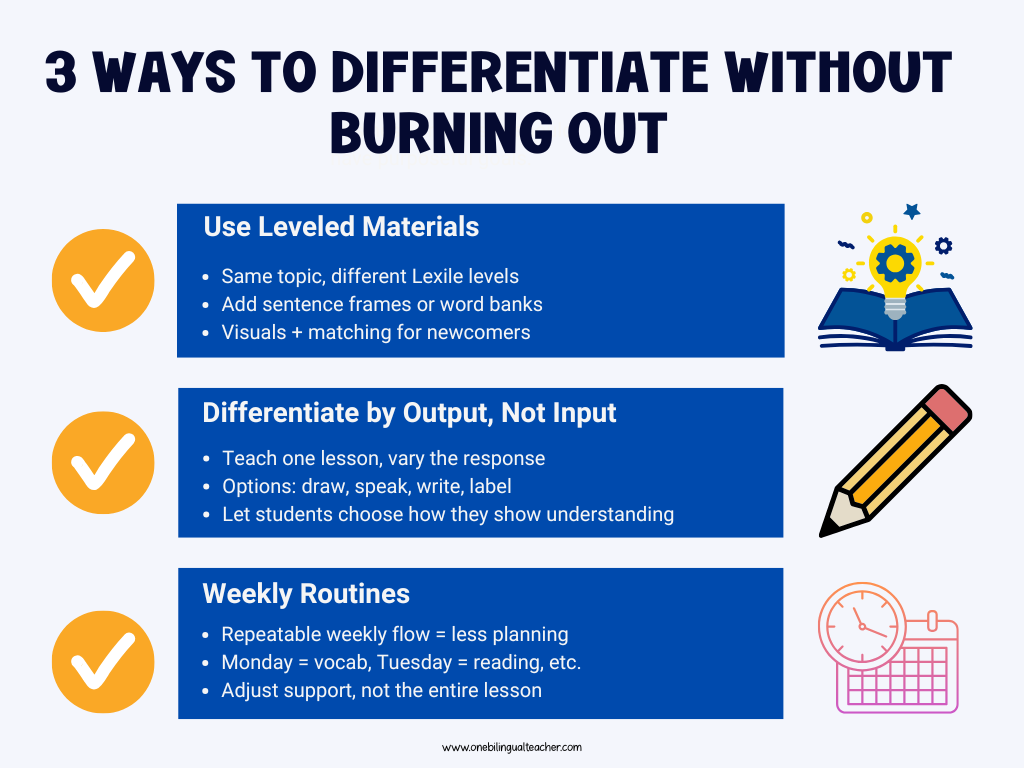How to Differentiate ESL Lessons Without Creating 5 Versions of Everything
If you're exhausted trying to plan a different lesson for every student in your ESL class, you’re not alone.
Most of us aren’t just teaching ESL—we’re teaching newcomers, long-term ELs, and everyone in between.
And when your students are at every stage of English development, it’s easy to feel like differentiation means prepping five different lessons... for every class... every day.
But it doesn’t have to be that way.
In this post, I’ll show you how to differentiate ESL lessons without creating 5 versions of everything—and without spending every Sunday night buried in lesson plans.
Why Differentiation Feels So Overwhelming
Let’s name what makes this job so heavy:
You’re teaching multiple proficiency levels—sometimes in the same 45-minute block.
There’s often no curriculum (or one that’s made for native speakers).
You’re expected to support language and content at the same time.
You’re the only one in the building who understands scaffolding.
And you’re probably still writing your own lessons from scratch.
So if you’re feeling behind, tired, or like you’re failing—please hear this:
You are not doing it wrong. You’re just doing too much alone.
What Differentiation Actually Means for ESL
Here’s the good news: Differentiation doesn’t mean complexity.
It doesn’t mean 5 separate versions of every lesson.
It means creating one learning task with multiple entry points—so that all your students can engage, even if they’re at different levels.
Differentiated ESL materials might include:
✅ Choice boards (with speaking, writing, and visual options)
✅ Sentence stems or paragraph frames
✅ Leveled reading passages on the same topic
✅ Visual word banks and matching activities
✅ Small group rotations with flexible grouping
Differentiation isn’t about doing more—it’s about doing less, more strategically.
3 Simple Ways to Differentiate Without Burning Out
Let’s talk real-life application. These strategies work in multi-level ESL classrooms—and they don’t require you to reinvent your entire week.
1. Use Leveled Materials
Choose one topic (like ecosystems, personal narratives, or holidays), and give your students texts at different Lexile levels.
Add sentence stems or vocabulary supports for newcomers
Let advanced students write, summarize, or analyze
Use visuals and matching for pre-literate or beginning students
You’re not planning five different lessons—you’re delivering one theme in multiple ways.
2. Differentiate by Output, Not Input
Every student hears the same read-aloud, watches the same video, or joins the same mini lesson.
But how they show what they learned can differ:
Newcomers draw a picture and label it
Intermediates complete a sentence frame
Advanced learners write a paragraph or share a presentation
Everyone is working—just at their level
This is multi-level ESL differentiation in action.
3. Anchor Your Week with Routines
This is my personal sanity-saver.
Create a repeatable weekly structure so students know what to expect, and you don’t have to plan from scratch every day.
Monday: Vocabulary practice
Tuesday: Read and discuss
Wednesday: Writing response
Thursday: Partner speaking or game
Friday: Wrap-up or quick assessment
The structure stays the same—you just adjust the level of support.
What to Use Instead of Making Everything from Scratch
You don’t need to spend hours creating perfect lessons. You need resources that are already scaffolded and leveled.
Look for differentiated ESL materials like:
Tiered comprehension passages (same topic, different levels)
Picture word banks
Structured writing frames and sentence starters
Speaking prompts by proficiency level
If you're teaching middle or high school ELs and want to stop piecing together lessons from scratch, I’ve got you covered.
My ESL teacher membership includes ready-to-go lessons, leveled reading, writing support, and scaffolded speaking activities—so you can meet every student where they are without burnout.
Progress Over Perfection
“Differentiation doesn’t mean doing more. It means doing it smarter.”
Let’s be real: even the most perfectly differentiated lesson won’t reach every student, every time.
And that’s okay.
Because it’s not about being perfect.
It’s about showing up.
It's about giving students access to language and content—even when it’s messy.
And it’s about moving them forward, even one step at a time.
Want to Make Differentiation Easier?
Ready to simplify differentiation?
My ESL membership gives you leveled texts, sentence frames, and speaking prompts every month—so you can focus on teaching, not recreating the wheel.
Click here to check it out.



